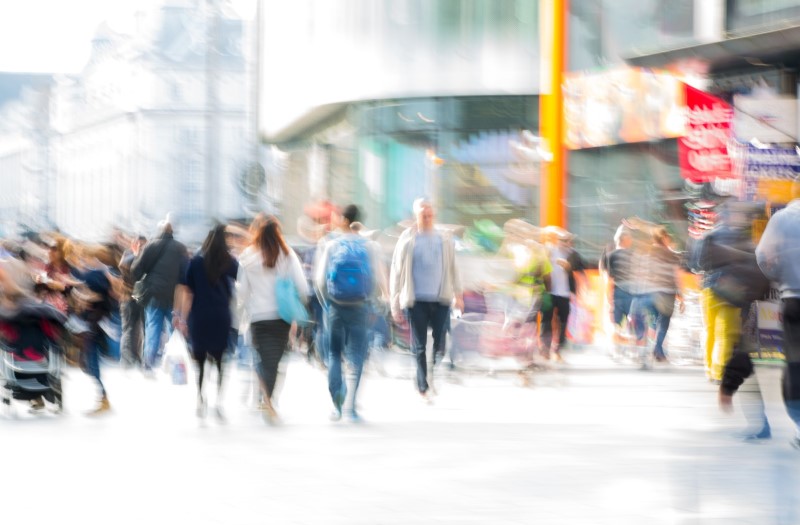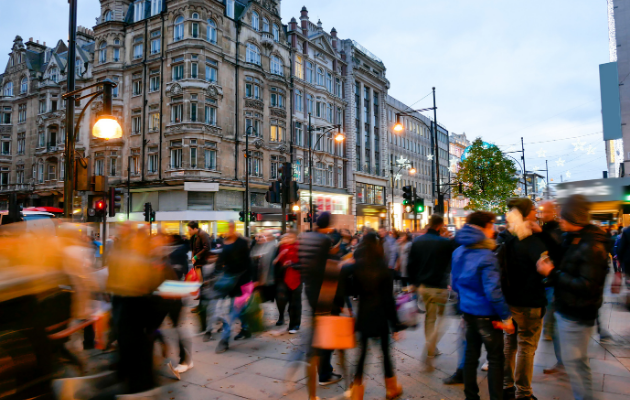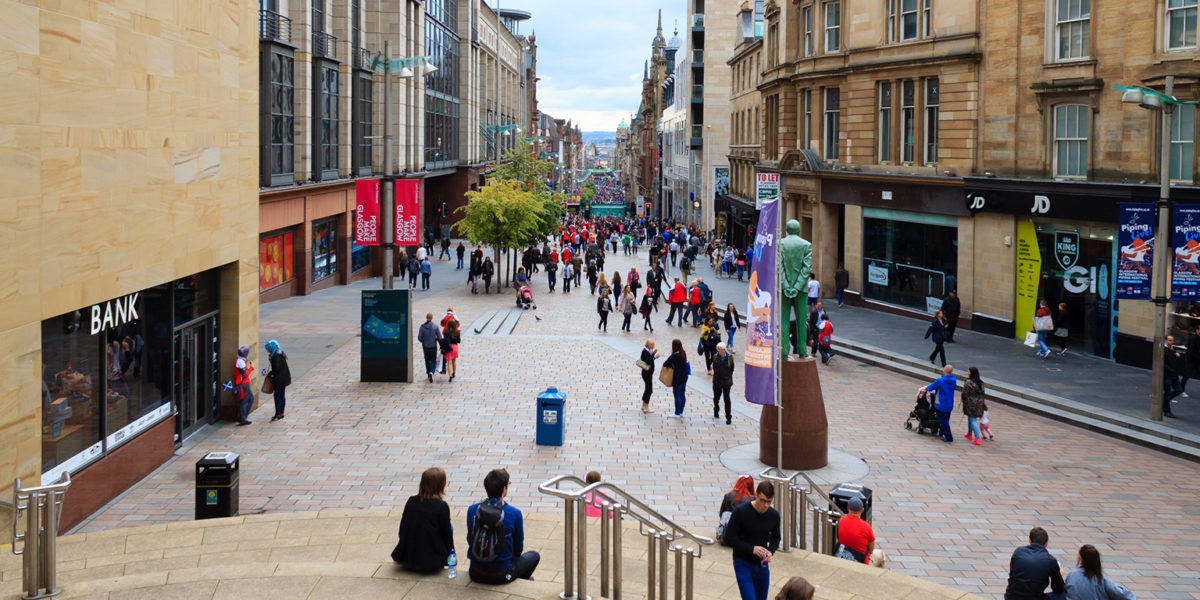
Explore the changing levels of activity within the high streets of Britain's cities and large towns from February 2020 to May 2022.

While many UK high streets have experienced a much-needed boost thanks to the lifting of restrictions in April, shops, restaurants and pubs in London and other big cities continue to struggle.
April’s lifting of lockdown restrictions provided a much-needed boost to many high streets as spending surged to pre-pandemic levels in more than half of Britain’s cities and large towns – but cities are continuing to struggle.
New data from Centre for Cities’ High Street Recovery Tracker suggests that spending in Britain’s large towns and smaller cities are recovering faster than in its largest urban centres. Northern England and the Midlands is also so far recovering faster than elsewhere – of the 35 places studied where spending has returned to pre-pandemic levels, 20 are in the North and Midlands.
So far, high street spending has recovered the most in Huddersfield, Basildon and Blackburn. Meanwhile London, Aldershot, Oxford and Birmingham so far have the weakest recoveries in England.
Although spending in Scottish cities is the lowest in the UK in April, retail and hospitality opened on a later date than in England.
Cities where spending levels are highest
| Rank | City | April 2021 spending (% of pre-lockdown) | Difference to week before reopening (percentage points) | Difference to summer 2020 reopening (percentage points) |
| 1 | Huddersfield | 1.19 | 48 | 19 |
| 2 | Basildon | 1.17 | 65 | 32 |
| 3 | Blackburn | 1.17 | 54 | 17 |
| 4 | Birkenhead | 1.17 | 80 | 12 |
| 5 | Mansfield | 1.17 | 77 | 29 |
Cities where spending levels are lowest
| Rank | City | April 2021 spending (% of pre-lockdown levels) | Difference to week before reopening (percentage points) | Difference to summer 2020 reopening (percentage points) |
| 58 | London | 0.53 | 34 | 26 |
| 59 | Dundee | 0.34 | -1 | -4 |
| 60 | Aberdeen | 0.24 | -1 | 0 |
| 61 | Glasgow | 0.18 | 2 | -12 |
| 62 | Edinburgh | 0.12 | 2 | 4 |
While high street spending in many larger cities remains below pre-lockdown levels, it is now significantly higher than it was this time last year – suggesting that consumer confidence is returning as more and more people are vaccinated and the pandemic ends.
Despite these positive signs, the Government and England’s newly elected metro mayors must set out plans to encourage people to return to the centres of our largest cities. Without the return of visitors, tourists and office workers thousands of jobs in shops, restaurants, pubs and other city centre services remain under threat.
Centre for Cities’ Chief Executive Andrew Carter said:
“We can already see that the vaccination programme and lifting of lockdown is helping businesses get back on their feet. Many cities and towns, particularly those in Northern England and the Midlands, have seen a boom in consumer spending in the past month.”
“It’s not all good news, the centres of our biggest cities such as London, Birmingham and Manchester remain quiet as people there continue to work from home. If this doesn’t change in the next few months I’d expect to see more people working in retail and hospitality in our biggest city centres lose their jobs. The Government must work with the newly-elected metro mayors to stop this happening.”
Notes to editors
About Centre for Cities
Centre for Cities is a research and policy institute, dedicated to improving the economic success of UK cities. We are a charity that works with cities, business and Whitehall to develop and implement policy that supports the performance of urban economies. We do this through impartial research and knowledge exchange.

Explore the changing levels of activity within the high streets of Britain's cities and large towns from February 2020 to May 2022.

How to revive the high street after the pandemic.

Drawing on lessons from the first lockdown, there will likely be large differences between how the high streets of cities across the UK recover as restrictions begin to lift.

It is too simplistic to state that the increase in online retail inevitably threatens the high street.